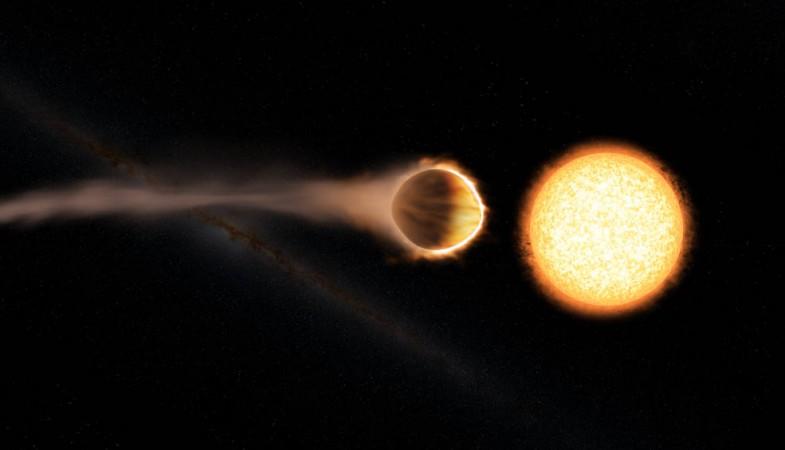
A new method to study the atmosphere and weather on distant planets has made way for the discovery of a strange alien world that is like a comet with helium in its atmosphere in the neighborhood of the Virgo constellation about 200 light years from Earth.
Till now, notes a report by Space.com, the hunt for exoplanets has only involved looking for hydrogen in their atmospheres which is not only the most abundant element in the universe, it also makes up most of the gas giants in the Solar System like Jupiter. Helium, another light gas, should also theoretically be easy to spot in exoplanet atmospheres, but scientists have not detected it till now, notes the report.
"This is a new method to probe the upper parts of an exoplanet atmosphere, where high-energy radiation is observed," study lead author Jessica Spake, an astronomer at the University of Exeter in England. "Hopefully, we'll be able to study many more upper planetary atmospheres this way."
Studying the atmosphere of an exoplanet involves looking at the light that passes through it as it reaches Earth. When a planet passes in front of its host star and casts an interstellar shadow, observers on Earth can spot the shadow as well as the light that filters through and different elements react in different ways to light and this is something of a fingerprint which can be read by scientists.
Helium was spotted for the very first time on WASP-107b, a super-Neptune gas giant that is about 200 light years from Earth. It is reported to be roughly the same size as Jupiter, but is a lot lighter, about one-eighth its mass, making it one of the least dense planets ever discovered. Also, WASP-107b is about eight times closer to its star than Mercury is to the Sun. One orbit by 107b takes about 5.7 Earth days. This proximity to its star and speed of revolution means it is also one of the hottest known planets known with temperatures reaching about 500 deg C.
NASA's Hubble Space Telescope was turned toward WASP to study the planet and capture infrared radiation emanating from it, notes the report. Apart from hydrogen, helium was also found in its excited state."The helium we detected extends far out to space as a tenuous cloud surrounding the planet," study co-author Tom Evans, also of the University of Exeter, said in a statement. The radiation from the star is so intense at that proximity that the planet's atmosphere is pushed out like a tail of a comet.














